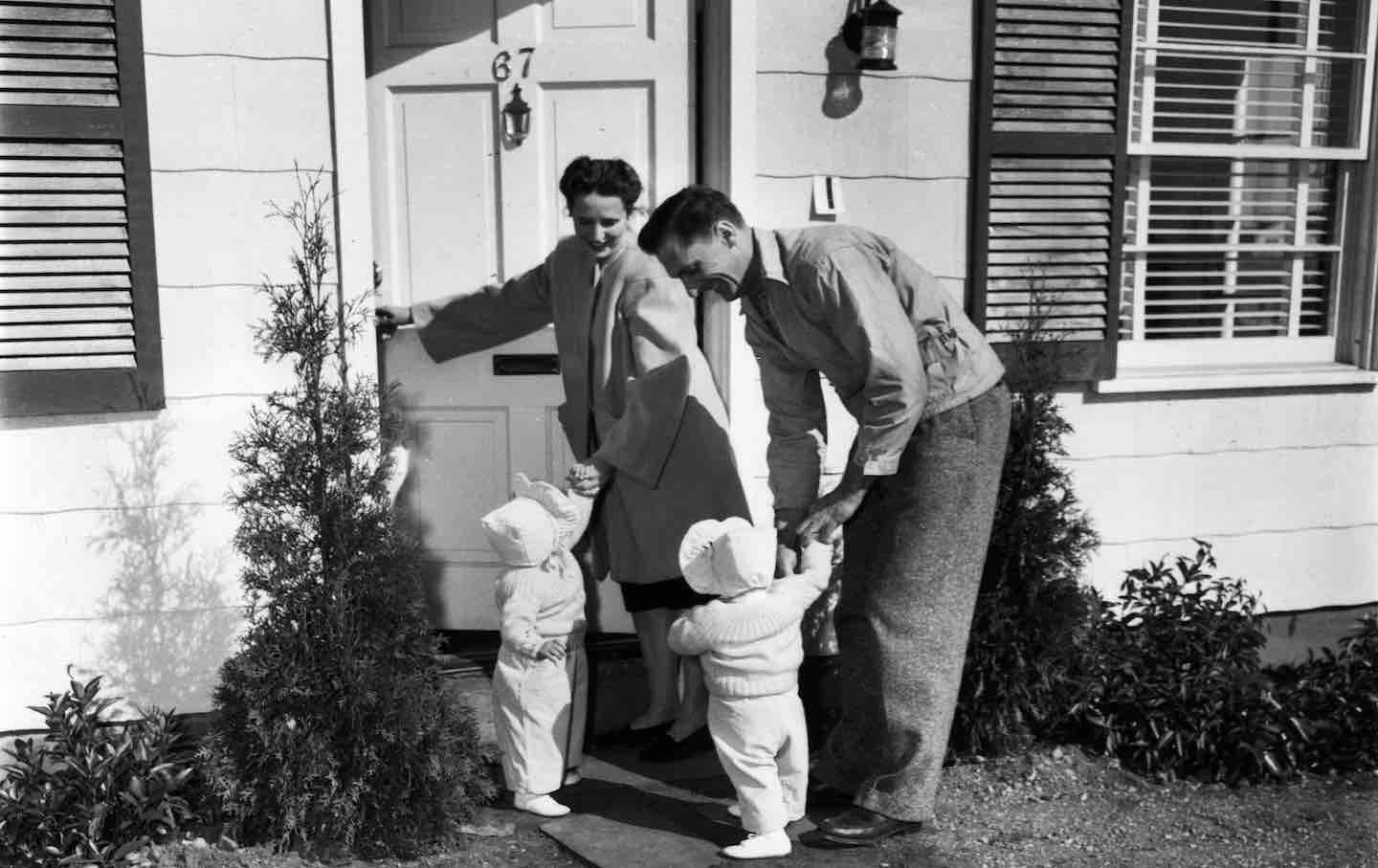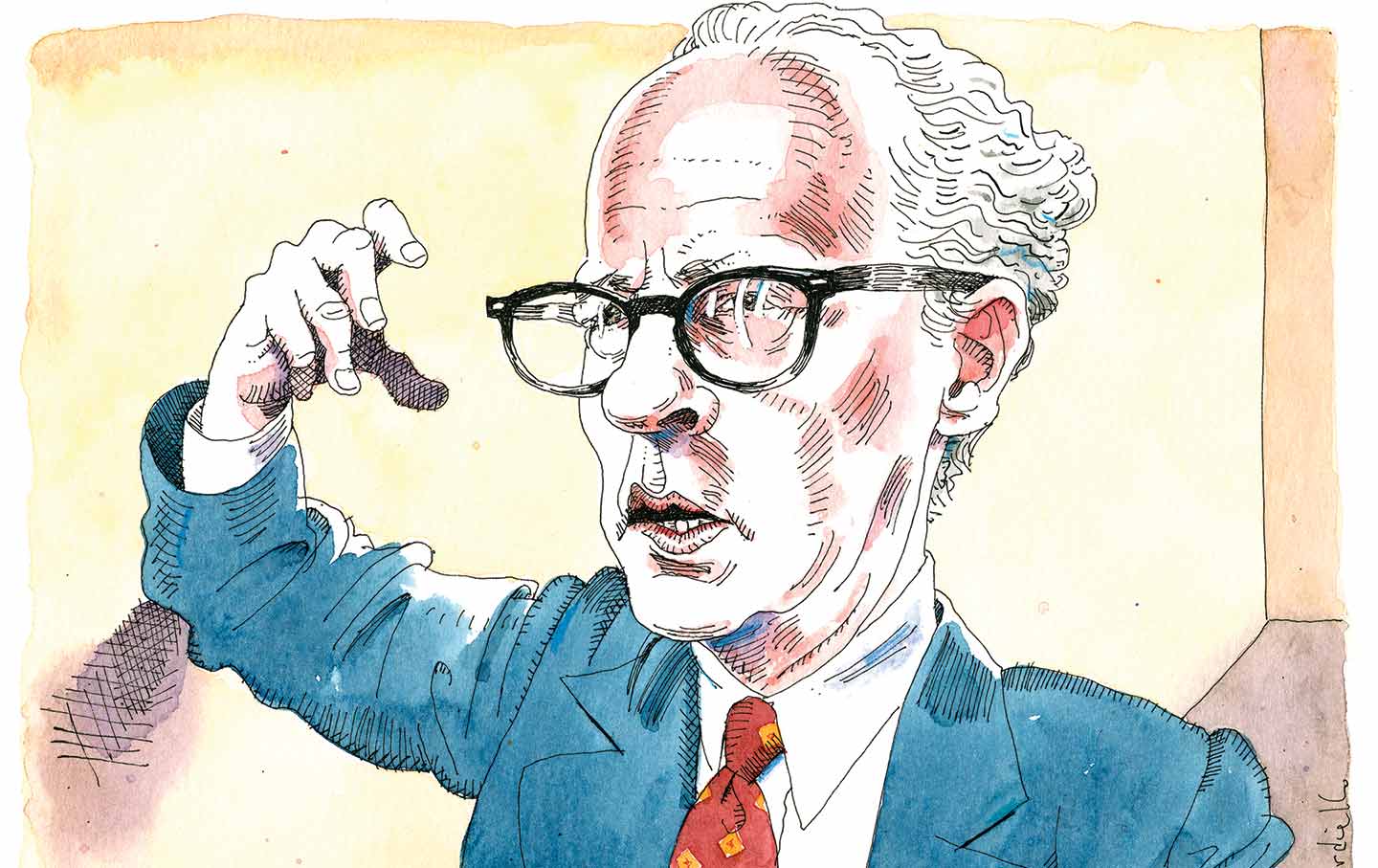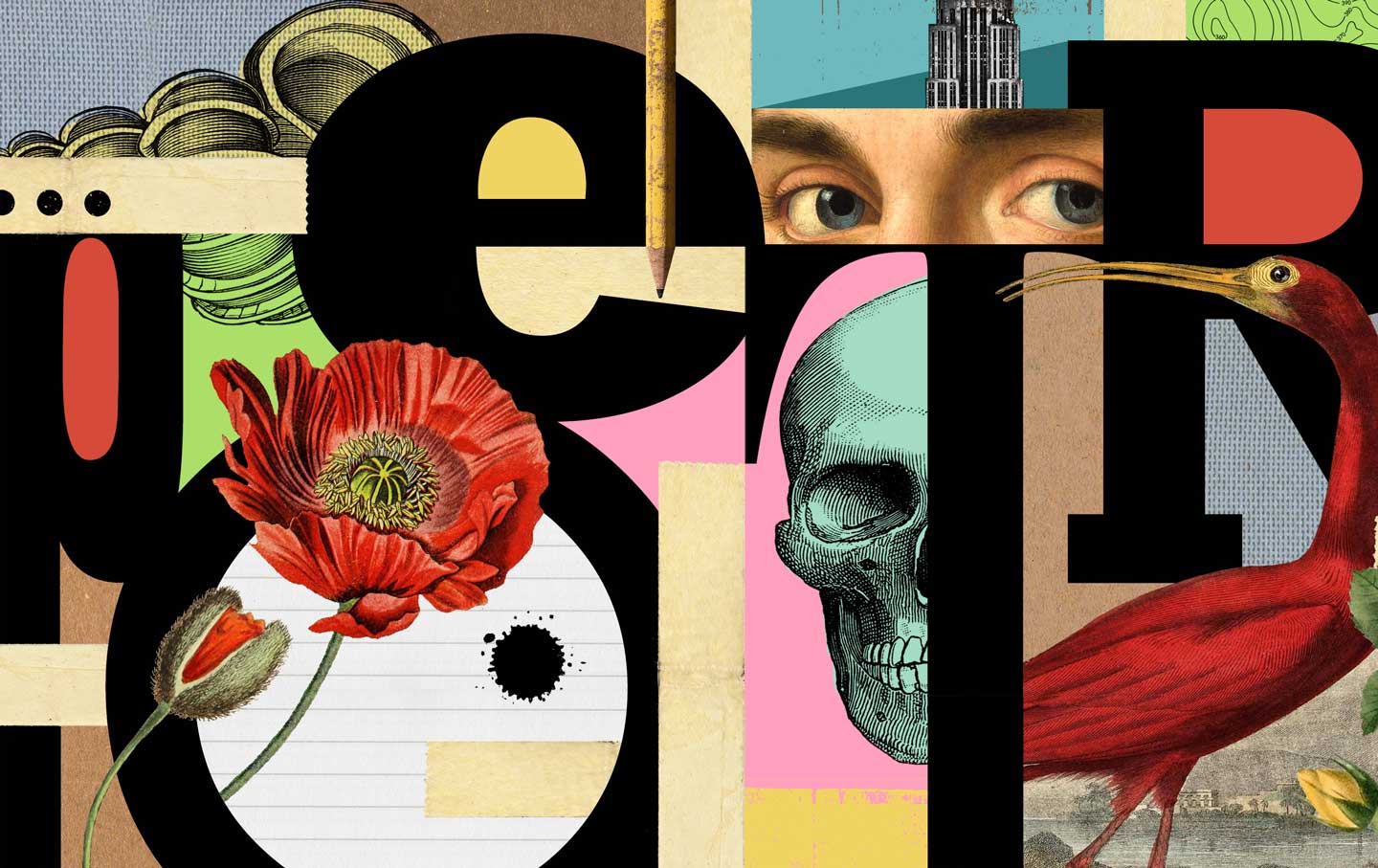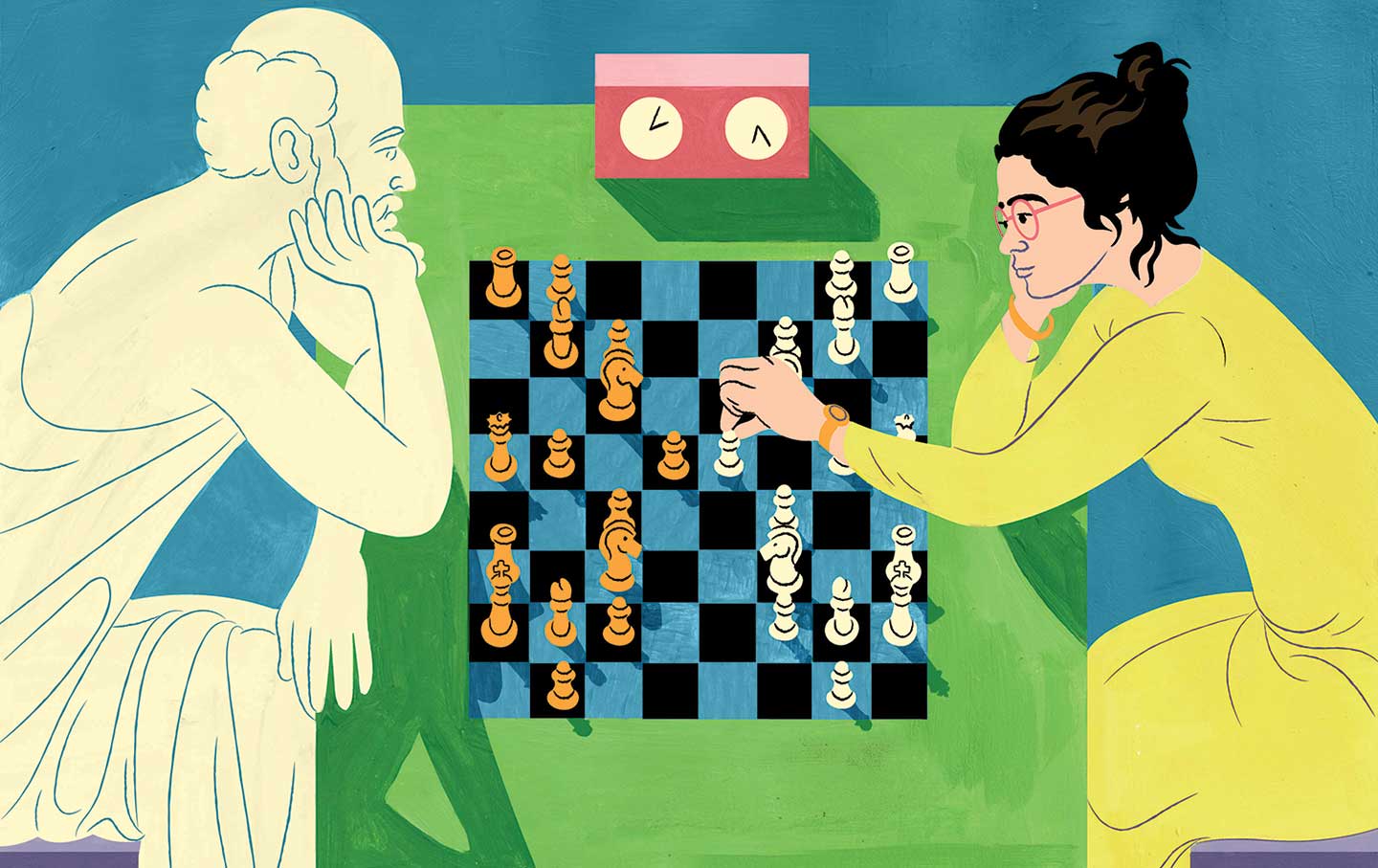Can You Put a Dollar Amount on White Privilege?
Tracie McMillan’s The White Bonus attempts to quantify the literal cost of racism in America.

The first family to move into the Levittown development in New York, 1947.
(Photo by Edna Murray / Newsday RM via Getty Images)
When Tracie McMillan was a student at New York University in the mid-1990s, she landed an internship at The Village Voice and worked under Wayne Barrett, an investigative journalist who considered himself a “detective for the people.” Barrett’s tutelage shaped McMillan’s mission: “To hold the powerful to account by reporting rigorously and telling full, honest stories about the poor.” McMillan came to focus her own journalism career on the travails of American workers—particularly those struggling to earn a living wage—primarily through the lens of food. In outlets like City Limits, McMillan explored New York City’s food deserts; later, her first book, The American Way of Eating: Undercover at Walmart, Applebee’s, Farm Fields and the Dinner Table, exposed the underpayment of undocumented farm laborers and the racial and gender inequities in restaurant kitchens. She would come to identify as working-class herself, in part because she barely earned more than her subjects.
Books in review
The White Bonus: Five Families and the Cash Value of Racism in America
Buy this bookMcMillan had grown up white and middle-class in an exurb of Detroit. Her parents had jobs good enough to afford home ownership, albeit with help from their own parents. This domestic stability soon crumbled, however. On New Year’s Day 1982, when McMillan was 5, her mother was diagnosed with multiple sclerosis and soon after suffered a debilitating, traumatic brain injury in a car accident. She lived the rest of her life in institutional care. When McMillan lost her mother—first to institutionalization, then to death at age 44 in 1993—her father, who had long struggled to control his temper, took out his rage on her. But even these adversities did not cause the family to lose their class position.
Nonetheless, McMillan saw herself as downwardly mobile because she refused to rely on her abusive father’s money. Unlike many of her NYU peers, she worked multiple jobs throughout college to pay for rent, living expenses, and a portion of tuition. Though McMillan’s upbringing was full of personal loss and maltreatment, her economic precarity in young adulthood was a choice—and, as she would come to realize, she was never truly without a safety net. Even when she went undercover as a grape-picker, Walmart shelf-stocker, and in the kitchen of an Applebee’s for The American Way of Eating and mostly lived off her wages from those jobs, McMillan’s connection to her coworkers was tenuous. They may have had similar paychecks, but her skin color ensured that she was treated differently. She was buoyed all along the way by her whiteness.
In The White Bonus: Five Families and the Cash Value of Racism in America, McMillan comes to terms with what her race has given her, turning her investigative eye toward telling a “full, honest” story about whiteness. She attempts to provide a literal accounting for the monetary difference in how white Americans like herself “directly benefit from racism,” tallying, in dollar amounts, the flip side of “‘the ‘Black tax’—the higher costs faced by Black Americans who have been denied so much of the aid extended freely to whites.” This “white bonus” has its roots in public policies for housing, employment, education, crime, and social welfare, as well as the accrual and distribution of familial wealth facilitated by generations of racist policies in both the public and private sectors. As the book unfolds, McMillan tracks how she and four other middle-class white families she profiles have profited from racism—and, ultimately, what racism has cost them.
But The White Bonus has an inherent flaw, one McMillan acknowledges in the introduction. “I cannot take a full measure of the material benefits of racism—and, as many economists have told me, it is likely that no one can,” she writes. “Racism is too complex, too slippery, too multifaceted to pin down its value in a definitive way…. any estimate I offer will be woefully, dramatically, impossibly insufficient.” Still, McMillan proceeds to offer estimates, down to the cent, in “The White Bonus Index” at the back of the book. Reading The White Bonus, it’s hard not to wonder why McMillan proceeded with this methodology. Her book attempts to answer whether the benefits of racism are worth their cost to white Americans, but in taking an individualist approach to a systemic problem, it poses another question: Whom is McMillan really trying to hold to account with this rough accounting?
McMillan begins her “story of white advantage in America” with her grandparents, focusing on how housing policies from the early 1900s through World War II allowed them to build wealth. She proceeds to take the reader through two more generations of her own family’s finances through an analysis of the federal, state, and local policies that have long subsidized life for white people at the expense of taxpayers of color. Woven throughout are four profiles of other white Americans, which allow McMillan to zoom in further on how racism has shaped American employment, education, crime, and healthcare. She is meticulous in approaching this task, tracking down property deeds and legal transcripts and conducting hundreds of hours of interviews. But in a book so diligent, what McMillan glosses over or leaves out is notable.
In her chapter on crime, for instance, McMillan tells the story of Jared Bunde, who managed to avoid felony charges after selling LSD at his Connecticut high school in 1994. While McMillan is focused on tallying all the money that Bunde and his family saved by avoiding incarceration—from the wages he didn’t lose ($52,735.44) to the commissary funds he didn’t need ($1,996.44)—she spends comparatively less time explaining and analyzing the policies born of the War on Drugs and their racist implications.
McMillan constantly reminds us that she was enabled to afford college, pursue a largely unprofitable writing career, and buy a house in Detroit by racist policies—along with the wealth her family accumulated as a result of those policies. Yet even as she reminds us that her tally in “The White Bonus Index” is “a bare minimum estimate,” the financial benefits she chooses not to link to her race are telling. She does not discuss the size of her advance for The White Bonus, a book that inherently depends on her whiteness, which Publishers Marketplace reported as “a major deal.” This is especially odd considering that McMillan acknowledges that “racism ingrained in the publishing industry gave me advantages that led to the contract for my first book—and the contract for this one, too.”
In approaching her racial reckoning with the tools of investigative journalism, memoir, and rough math, McMillan’s ultimate goal appears to be to cause white readers to think about their own financial advantages. This is a laudable goal, and The White Bonus succeeds in a cogent illumination of the systems that continue to drive racial inequity in the United States. On the book’s website, readers (primarily white ones) will soon be able to estimate their own family and social bonuses, answering such questions as: “Of the public policies and private practices that offered whites material advantages after 1900, which ones did your parents, grandparents, or great-grandparents use?”
In other words, the ideal reader of The White Bonus is someone like me—a fellow member of the white middle class who is open to grappling with the “unearned advantages” conferred on us by institutional racism. Reading The White Bonus did indeed cause me to reflect further on those advantages and better understand how racism shaped the policies that undergird them. I was born and raised in West Hempstead, Long Island, less than 10 miles west of the original Levittown, which notoriously excluded Black families. The house I grew up in was built in 1947, during the postwar boom; my maternal grandparents purchased it in the mid-1950s. I believe that they were able to do so thanks to the GI Bill and a mortgage underwritten by the Federal Housing Administration—as McMillan points out, these benefits were functionally available only to whites. My own parents bought the West Hempstead house from my grandparents in 1988, the year before I was born. Like McMillan, I attended neighborhood public schools that were functionally segregated thanks to the long tail of postwar housing policies and the discriminatory practices of local real estate agents, who racially “steered” prospective buyers and participated in blockbusting. Like McMillan, I encountered personal adversity that irrevocably changed my life when I was a young teenager—both my parents died of cancer. And like McMillan, I can see that I continue to benefit, materially, from my whiteness.
I needed little convincing that my race is ultimately to thank for my financial stability. But judging by how some of McMillan’s own subjects reacted when asked to grapple with how racism has helped them, the argument that The White Bonus puts forth may be insufficient to occasion the reckoning it seeks. McMillan herself admits as much, writing: “I make no claim that I have proven, with scientific rigor, that any of my subjects’ wealth can be traced to their race,” throwing into question the book’s various case studies that underpin it.
Take, for example, the Beckers, the one family that McMillan grants a pseudonym. The Beckers have long lived in Hattiesburg, Mississippi, and McMillan tells their story in order to explore the benefits and costs of school segregation via two of their daughters: Lindsey, who benefited from district funding that funneled resources to white students in her majority-Black school in the late 1990s and early 2000s, and Maryann, who is five years younger and received a comparatively lower-quality education after a pattern of white flight decimated the school’s finances.
The Beckers were able to construct “a custom safety net” for Maryann, paying off her nearly $35,000 in student debt after she failed to graduate college because she was overwhelmed by how “stupid” she felt. When McMillan prompts the Beckers to consider how race gave them advantages, Rosie, the mother, says: “If there’s a certain portion of our success that is solely because we are white, there’s another portion of our success [that] is because we didn’t buy new cars and go into debt.” They attribute their financial success partly to evangelical personal-finance guru Dave Ramsey and believe that their “thrift and diligence” are the key ingredients of their upper-middle-class comfort. McMillan later reveals that the Beckers own a family farm that has been passed down since the 1800s and once belonged to family members who enslaved more than two dozen people.
The White Bonus is at its best when McMillan is trying to account not for what racism has given white Americans but what it has cost them. In a chapter on Barbara Nathan Katz, a woman who was raised upper-middle-class in Texas and died in poverty at age 62, having avoided seeking medical care because of the costs of both insurance and treatment, McMillan is at her most forceful, pointing a finger at the systemic causes of Katz’s demise. White Americans, McMillan writes,
have listened to leaders who said that the safety net was not for us. We have dismissed the fact that these leaders are often bankrolled by the same companies who benefit massively from this fractured, punitive, and expensive system. We believed that asking the poor to prove their worth was reasonable because we assumed they would mostly be Black. We told ourselves that it was reasonable to think so because we did not believe it would happen to us.
Popular
“swipe left below to view more authors”Swipe →White supremacy has thus harmed all Americans who have to rely on our safety net, which McMillan writes was made “thin and flimsy by racism from the start.” Because racism has cost Americans a functioning system of social welfare, creating instead a government with an “evident indifference to its people’s needs for health care, for affordable shelter, for education that leads to a stable life, for healthy food,” McMillan determines at the end of The White Bonus that racism’s “benefits aren’t worth what they cost.”
But she hedges, writing: “At least, not for me. What about you?” It’s this individualistic focus, at the end, that costs McMillan an opportunity to hold the truly powerful to account, to take to task the people today who create and uphold the policies that are hurting us all. Instead, she settles for asking white people, one by one, to reckon with their personal advantages. In the end, this approach—which puts the responsibility for systemic change on the individual, asking readers to do as she has done and refuse to remain silent about the racism at the core of American life—can only take us so far. This kind of paradigm shift might be a necessary step toward change, but just as our government “built the system that made being white so valuable in the first place,” it is up to our government to dismantle it.
Editor’s note: A previous version of this review incorrectly stated the length of the book’s discussion on the War on Drugs. The final paragraph has also been updated to clarify the reviewer’s argument at the end.








